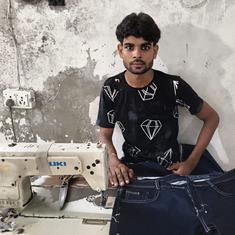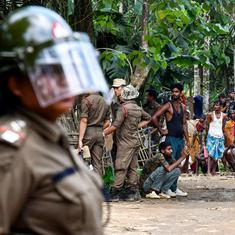Jon M Chu’s Crazy Rich Asians has been hailed as a victory for the representation of Asians in Hollywood, but in Singapore, where most of the movie is set, critical response has been lukewarm. According The Guardian, one of the main contentions against the romantic comedy is that it does not reflect the ethnic minorities of the island country, virtually obscuring its sizeable Malay and Indian populations. The film was released in Singapore on Wednesday.
Based on Kevin Kwan’s 2013 novel of the same name, Crazy Rich Asians narrates the story of an Asian-American professor Rachel Chu (Constance Wu), who travels to Singapore to meet the family of her boyfriend (Henry Golding) and learns that they are among the country’s wealthiest. It is the first major Hollywood film after Wayne Wang’s Joy Luck Club (1993) to feature an all-Asian cast that includes Gemma Chan, Awkwafina, Nico Santos and Michelle Yeoh. The movie was released in the United States of America on August 15 and has earned $34 million so far.
Indian-origin Singaporean activist and writer Sangeetha Thanapal said in Wear Your Voice that the film perpetuates the existing racism in Singapore by excluding minority communities. “The only Brown people in the movie are opening doors or in service of the elite Chinese in the movie. Minorities only exist in the periphery of the film. Why is this being lauded as revolutionary?” she asked. “The movie is set in Singapore and only has Chinese people in it: this is not new or refreshing, this is actually the everyday lives of Singaporean minorities.”
Journalists Cat Wang and Kristen Han voiced similar concerns. Wang said that while the film shows what it is to be “crazy” or “rich”, it does not touch upon the experience of being Asian and overlooks the mistreatment of minorities in Singapore.
#CrazyRichAsians shows what it means to be #Crazy and what it means to be #Rich. It does not show what it means to be #Asian.
— Cat Wang (@catzxwang) August 17, 2018
Han additionally criticised the film for showing an airbrushed version of the country. Writing for Foreign Policy, she said: “In a country where elderly people still collect cardboard on the streets to scrape together a few dollars and low-wage migrant workers are often shortchanged for the hard labour they’ve performed, the media depiction of it always focuses on the gentrified neighborhoods, the tourist-friendly hawker centers, and the Marina Bay Sands, one of the most expensive buildings in the world. Crazy Rich Asians is no exception...The Singapore Tourism Board must be over the moon with this portrayal of a manicured, glossy city.”
Singaporean film critic Nicholas Young, while noting the lack of diversity, questioned why local Singaporean actors were not cast in prominent roles: “The local actors play second fiddle to the pan-Asian cast. Which begs the question: was there not even one Singaporean actor good enough to be in the main cast?”
Ian Chong, a political scientist at the National University of Singapore, earlier told Yahoo Finance that the film “represents the worst of Singapore”. He said, “...I think that the context of the movie (and the book) presents Singapore in a one-dimensional manner. In exoticising Singapore, the story flattens out Singapore society and writes minorities out.”
As The Guardian pointed out, Chu had said at a press conference that the makers had “decided very early on that this is not the movie to solve all representation issues”. “This is a very specific movie, we have a very specific world, very specific characters,” he said. “This is not going to solve everything.”










